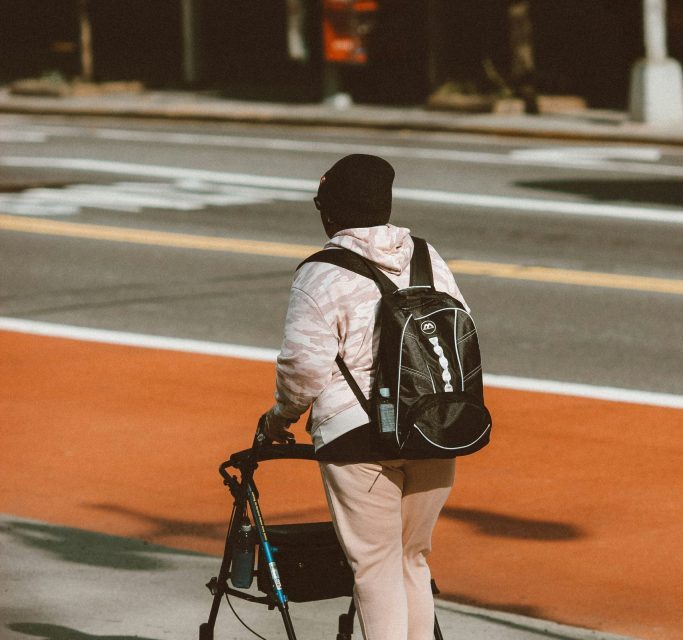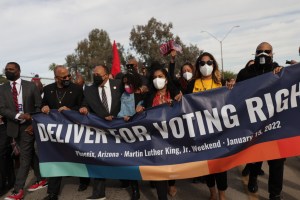By Megan Sayles
AFRO Business Writer
msayles@afro.com
A Rutgers University report out of the Program for Disability Research estimated that nearly 40.2 million people with disabilities were eligible to vote in the 2024 election, comprising about one-sixth of voters. This is 5.1 percent higher than in 2020.
Though a number of laws, like the Americans with Disabilities Act (ADA), the Voting Accessibility for the Elderly and Handicapped Act (VAEHA) and Help America Vote Act (HAVA), codify protections to ensure people with disabilities have the ability to cast a ballot, challenges still persist.

“For too long, many people with disabilities have been excluded from this core aspect of citizenship. People with intellectual or mental disabilities have been prevented from voting because of prejudicial assumptions about their capabilities. People who use wheelchairs or other mobility aids, such as walkers, have been unable to enter the polling place because there was no ramp,” said the Department of Justice (DOJ) Civil Rights Division, in an April release about challenges historically faced by disabled voters. “People who are blind or have low vision could not cast their vote because the ballot was completely inaccessible to them.”
In order to expand accessibility to the polls, organizations, like the National Disability Rights Network (NDRN), lent their support to voters with disabilities before and during early voting and on Election Day 2024.
Michelle Bishop, a voter access and engagement manager, spoke on how nonprofit organizations worked directly with election officials to make polling locations and voting as accessible as possible. This included evaluating various voting equipment, adapting locations to make them ADA-compliant and informed training for poll workers.
It also engaged people with disabilities to stress the importance of registering to vote and devising a voting plan.
“Voting should be easy for everyone, but it’s not always. As a person with a disability, you have to think about whether you have a transit option to get to your polling place, whether you need to bring someone or a service dog with you to assist you and what type of equipment will be there if you can’t hand mark a paper ballot,” said Bishop. “No one wants to get a surprise on election day and have things not go as planned.”
While there is still yet to be data on this year’s turnout for voters with disabilities, Bishop said there has historically been a gap in voter participation between people with disabilities and those without them.
“If there’s about 40 million eligible voters with disabilities, there’s several million people with disabilities who are going unheard,” said Bishop. “We’ve seen a narrowing in the gap since 2020 because of COVID-19.”
Social distancing protocols forced officials to reimagine the voting process, adding curbside options and expanding early voting periods. Bishop said these practices should continue to increase accessibility.
Standing outside the League for People with Disabilities in Baltimore on Nov. 5, Neka Duckett-Randolph, membership, advocacy and partnerships coordinator for Out for Justice, said voters approached her with questions about accessibility on Election Day.
She said she witnessed local polling places make their spaces more accommodating for older adults and people with disabilities. During early voting, Duckett-Randolph saw Enoch Pratt Free Library’s Southeast Anchor location supply a sitting area, ensuring voters did not have to stay on their feet while waiting to cast their ballots.
“Voting is important for everyone, and everybody should be encouraged and feel empowered to do it. Everybody pays their taxes. Everybody has to live here,” said Duckett-Randolph. “Everybody has rights that you can’t take away. Everybody has the right to advocate for themselves and cast their ballot to make their opinion and voice known. That’s why the infrastructure should support them and make it as easy as possible for everybody. Remove barriers for the most disenfranchised, and you make it easier for all of us.”
Following the 2022 midterm elections, the Election Assistance Commission (EAC) estimated that two million more ballots would have been cast if voters with disabilities voted at the same rates as voters without disabilities.
The agency has been working to improve its website, vote.gov, which provides information on registration and guides for voter populations, including voters with disabilities, college students, voters with felony convictions and voters experiencing homelessness. It has executed accessibility testing on all web pages, designed a new digital form filler tool and collaborated with disability advocacy groups.
The EAC plans to conduct more usability testing for the website with people who have environmental limitations, like poor access to the internet, and people with physical and cognitive disabilities. It’s also in the process of creating a display toggle that will enable users to enlarge text and change the contrast of the web page and adding definitions to confusing voting terms and phrases.
The post Room for improvement: A look at accessibility for voters with disabilities appeared first on AFRO American Newspapers.












